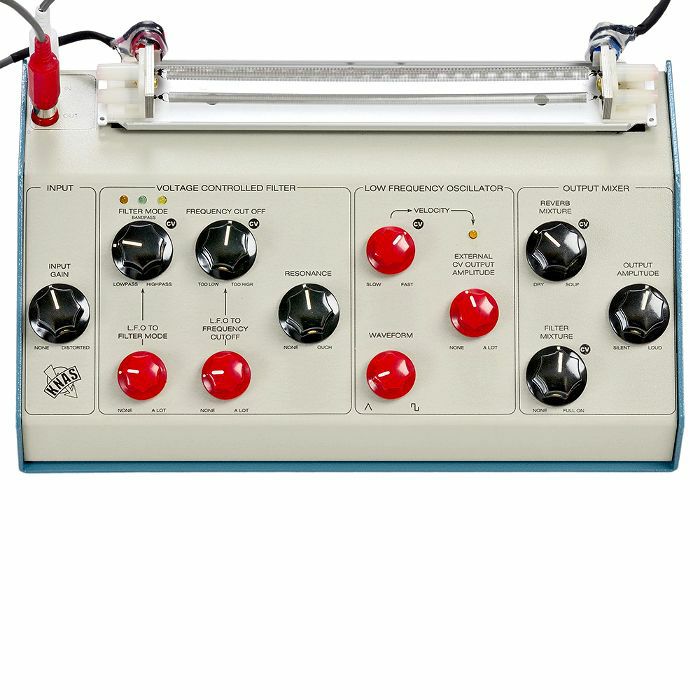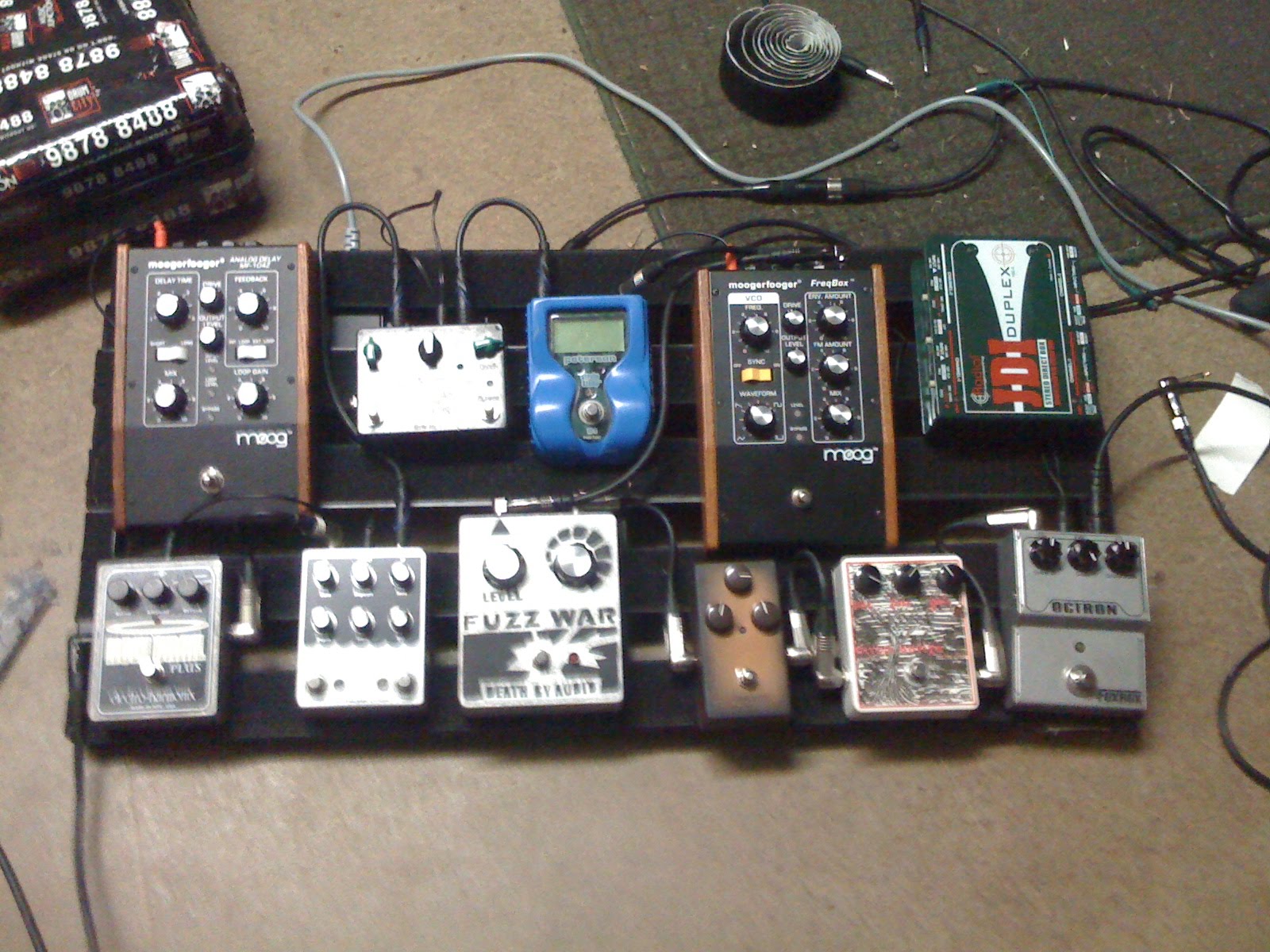A Brief History of Reverb
Is there an Echo? A Brief History of Reverb
Reverb, Verb, Echo. For a lot of music listeners reverb is an effect that is often overlooked, or in some cases unacknowledged. It can sit so sweetly underneath a mix, or completely consume it and make your guitar/song sound like its being performed underwater. But let me make one thing perfectly clear: without reverb, there wouldn’t be music as we know it today. So lets dive right in to it shall we?
What is reverb? Reverb is basically a musical term for a captured space; it’s the sound of the room the instrument is being played in, having an impact on the sound of the instrument being recorded. For example, have you ever clapped in a cave and listened to the echo? What you’re listening to is reverb, it’s the sound of your clap being dispersed across the cave and bouncing off the walls and travelling back to you, cool right?
Back in the early 1920s, studio engineers began experimenting with recorded reverb by attempting to capture the space of the room on the recordings through microphone placement and recording in different rooms to achieve different desired reverb effects. This type of reverb is referred to as ‘Natural reverb’, because you’re literally capturing the natural space of the room.
It’s hard to believe that many record labels boycotted the use of reverb on recordings over something as silly as a jukebox, but they did.
With the invention of the jukebox sweeping the nation as the new way to listen to music in bars and diners across U.S in the 1930s, record labels were at the mercy of its primitive playback technology that was incapable of playing music with reverb on it without sounding terrible, so they stopped
using it. Which is why most recordings from the 1930s- 1940’s are often described as dry.
Fast-forward to the post war era and playback technology had finally caught up and evolved Pokémon style into futuristic Hi-Fi systems. A more advanced playback system capable of playing records with higher quality audio that wouldn’t suffer from the use of reverb. The solution brought by Hi-Fi allowed to producers to bring back the use of reverb on their recordings and pushed them to invent new and exciting ways to create reverb.
Needless to say, reverb is a confusing subject. I’ve been sat at my friend’s kitchen table all morning driving myself crazy trying to find a way to present the origins of reverb in a concise and informative manner, but if I actually attempt to do so you’ll be reading this article for the rest of your life. So what am I going to do? Well, this is a guitar tutoring website, and I’m a guitarist trying to provide helpful content for other guitarists, so I’m going to get back to talking about guitars as soon as I can so we can all walk away from this article happy and I can go and teach later. Sound good? Good.
Plate Reverb:
Essentially all I skipped regarding reverb history is that engineers were looking for more control over the reverbs they were capturing without having to rerecord an entire song again in a different location, which is fair enough right? Thus we have the invention of artificial reverb, which is basically someone trying to synthesize the space of a room without actually having to record in it. One of the earliest forms of this technology was the EMT 140 plate reverb. Developed by Universal Audio’s Bill Putnam, the EMT 140 comprises of two metal plates in parallel creating a tunnel, which the audio is then played through one end and
recorded by a pickup at the other end. You could control the length of the reverb by pushing or pulling the plates further or closer together, mental!
Considering that in order to have actual plate reverb in your rig you need a giant plate reverb contraption that wouldn’t even fit in your car let alone on your pedal board. Therefore traditional plate reverb has almost exclusively been used on recordings since the late 1940s. Known for its bright sound and smooth decay, plate reverb has been heard on countless records over the years and is one of the cornerstones of artificial reverb.
Spring Reverb:
Another variant of artificial reverb, spring reverb uses (you guessed it) a spring with a driver at one end and a pickup at the other to capture the vibrations created by the audio passing through it. The addition of multiple springs added another dimension to the reverb, as the vibrations from each spring would also effect the other adjacent springs separately to the drivers and audio passing through them, giving the reverb more depth and individual personality. The beauty of spring reverb was that it could be produced in ever shrinking packages, meaning they could be installed into guitar amplifiers from as early as the 1960s, which was a godsend for guitarists when you consider the size of the first “portable” spring reverbs that came with Hammond organs back in the late 1930s.
Known for its signature drippy sound and rackety decay, spring reverb is probably the most commonly used reverb amongst guitarists, arguably for its tone, but probably due to the fact that pretty much every amp ever made comes with spring reverb in it. It’s also because it’s a reverb that works so well with the guitar in general. The best reference for
what spring reverb sounds like is surf music, specifically Dick Dale’s Misirlou. If you’re unsure about what spring reverb sounds like, look no further than that song. It can also be seen on film soundtracks that take influence from the Spaghetti Western genre. Ennio Morricone’s work is the most famous (Fistful of Dollars, The Good, the Bad and the Ugly, etc) so start there.
Digital Reverb:
With the birth of the digital age came massive developments in reverb. The once innovative concept of synthesizing space through plates and springs was cast aside for digital algorithms that use feedback delay circuits to create a series of echoes that can be customized to the nth degree.
Introduced in the 1970s with the EMT 250 rack unit, digital reverb became the staple reverb in every studio almost instantly due to its compact size and functionality. It allowed you to digitally recreate any space you could think of and have full control over the parameters of said space; giving the user a level of control that plate and spring reverbs can only dream about.
The crazy thing about digital reverb is that since is birth in the 70s it has developed further and further into a stratosphere we could never have imagined previously. With the invention of VSTs and high quality digital reverb pedals, the modern day musician can have access to pretty much any reverb they can think of AND have complete control over it. You can even get reverbs that are recreations of specific reverbs of famous rooms E.g. the Sistine Chapel! Now you try and tell me you don’t want to play the Eruption solo with some sweet Sistine Chapel verb on there, go on I’ll wait… yeah I didn’t think so.
Dan’s Picks:
I know that usually I do my picks one by one as I break down each subsection of the effect I’m talking about, but reverb is a bit of a tricky one when it comes to buying one type reverb pedals for two reasons; 1. More often than not reverb pedals these days are almost always digital and tend to have multiple types of reverb on them, and 2. If they are just one type of reverb they’re usually out of the price range for beginners, especially if you find one that isn’t digital, which it probably will be. So I’ve decided to stick to my budget friendly guns and give you some reverb pedal options that can allow you to try out loads of cool types of reverbs, without having to break the bank. You’re welcome.
TC Electronic Hall of Fame Mini (£72)
I’m going to start with the simplest and most affordable pedal on my list for the straight shooting players out there. The Hall of Fame mini is an immensely compact version of TC’s Hall of Fame reverb, without any of the hassle or floor
space. Its one knob fits all design suits players who are looking to add reverb to their tone in a similar way they would add reverb from an amp. However, the addition of TC’s signature Tone Print app allows users to pick and choose the reverb in their pedal by selecting it from the app and them beaming it straight into the pedal from their phone! You can’t get more futuristic than that in the guitar world, and for £72 it’s my budget reverb pick every day of the week.
Boss RV-6 (£116)
There was always going to be a Boss pedal in this list. They were the first to do it and continue to compete and dominate the affordable pedal market, and the RV-6 is no exception. Coming with eight different types of reverb, the RV-6 provides both classic and modern styles of digital reverb in an easy to use compact format. Its also got expression out which can be set to control varying parameters of the reverb if you are looking for more control. For the player who
wants classic reverb sounds and the option of slightly more control on the fly, the RV-6 is for you.
TC Electronic Hall of Fame 2 (£125)
The big brother of the HOF mini, the Hall of Fame 2 reverb provides all the great sounds of the HOF mini with far more control. It comes with eight types of reverb, and then three blank slots that allow you to save different reverbs from the Tone Print app, or ones you have designed yourself! Each reverb can be used subtly, or completely wash out your tone, the choice is yours. For the player who wants endless control at his fingertips but the option of ignoring it completely, the Hall of Fame 2 is the perfect pedal for you.
By
Dan Tredgold


